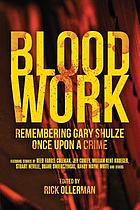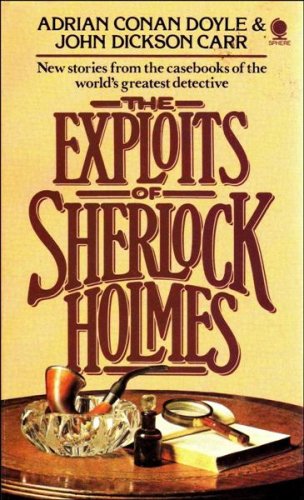I'm still amazed that one of the major plays of the 1960s, The Persecution and Assassination of Jean-Paul Marat as Performed by the Inmates of the Asylum of Charenton Under the Direction of the Marquis de Sade, ever reached the stage, mostly because the title was too long to fit on theater marquees. Most people can't give you the full title, but theater groupies call it Marat/Sade, which does fit on most posters. Not that anyone performs the play anymore.
So, what is a good title and how do you come up with it?
A good title catches the reader's eye and tells her something about the story. If the book is part of a series, the title should announce that, too. John D. MacDonald's Travis McGee series used designer colors: copper, azure, crimson. The early Ellery Queen mysteries featured a nationality: The Chinese Orange Mystery, The Roman Hat Mystery, The Siamese Twin Mystery and so on. Sue Grafton's alphabet titles are approaching "Z" and Janet Evanovich is up to number twenty-three. A letter means Kinsey Milhone, and a number tells us Stephanie Plum is back.
Hank Phillippi Ryan's Charlie McNally novels all use a monosyllable followed by "Time." Drive Time, Face Time, etc. Lynne Heitman's books about former airline executive Alex Shanahan are Hard Landing, Tarmac, and First Class Killing. Karin Slaughter often uses one-word titles that suggest violence: Fractured, Criminal, Fallen, Broken, Undone.
Early on, my cover designer told me short is better, not just because it's punchier, but because it's easier to fit the words around other artwork.
Simple, huh?
But what if you don't have a series yet? OK, what's a major event or object in your story? Use it. That's how we got Rear Window, Mystic River and The Maltese Falcon. Maybe you can refer to a character, as Carol O'Connell does in Mallory's Oracle and The Judas Child. Thomas Perry does it with The Butcher's Boy, and Elmore Leonard gave us Up in Heidi's Room and Get Shorty. Using a character for the title goes clear back to the Greek tragic poets Oedipus the King, Electra), and Shakespeare named many of his plays after characters (extra credit question: name all twenty-seven of them).
If you don't want to use a character, how about a literary allusion? For centuries, authors have looked to the Bible or mythology for ideas. The Sun Also Rises, Ulysses, Tree of Smoke and Lilies of the Field are among zillions of them. Later writers referred to earlier writers: Hardy's Far From the Madding Crowd (Gray's "Elegy Written in a Country Churchyard"), Thackery's Vanity Fair (Bunyan's Pilgrim's Progress) Steinbeck's The Grapes of Wrath ("Battle Hymn of the Republic") and thousands of Shakespeare quotes. At one time, I could assign my classes fourteen different works with titles that came from Macbeth, including Frost's "Out, Out--," Anne Sexton's All My Pretty Ones, Faulkner's The Sound and the Fury, and Bradbury's Something Wicked This Way Comes. Robert Penn Warren, Mary Higgins Clark, and Jonathan Kellerman are among those who tape into children's rhymes: All The King's Men, All Through the House, Along Came a Spider...
Many contemporary writers use song or movie titles because they carry emotional links for people of their own generation (Who were you killing when this was Number One?). The late Ed Gorman used oldies, such as Wake Up Little Susie,
and Sandra Scoppetone uses twists on big band tunes, including Gonna Take a Homicidal Journey. Evan Lewis pays homage to earlier mystery writers with a play on Dashiell Hammett: "The Continental Opposite."
My wife hated the original title of my first novel, and she must have been right because every agent this side of the Asteroid Belt turned it down. She finally convinced me to change it, and we agreed on Who Wrote the Book of Death? The play on the song title suggests violence and the story involves writers using pseudonyms. I liked the first title, too, but maybe nobody else remembers Vaughn Monroe.
What was that title? Ghost Writers in the Sky.
When I got the idea for a novel that involved rock and roll, I began a still-growing list of song titles as starting points. Most of my stories use songs that suggest the story line, including "Running On Empty," about a couple discussing their crumbling marriage while driving, and "Stranglehold," about a guitar player who is accused of throttling a singer with a guitar string. The first rock and roll mystery became Blood on the Tracks, a Bob Dylan LP in the 70s, and the PI eventually became Chris "Woody" Guthrie.
The sequel was going to be Hot Rod Lincoln. Commander Cody and the Lost Planet Airmen recorded the song in Detroit, where the story took place, so I thought it was perfect. But the car thief in question became a minor character in the revisions and my cover designer and I struggled for the flip side. We tried most of the other car songs we could think of: Spring Little Cobra, Little GTO, Little Red Corvette (Why are they always little?) and they just got worse and worse. Pink Cadillac? Neh. My designer suggested Hyundai Bloody Hyundai, which we loved even though we knew it was only a place-holder.
 At the last minute, my wife--the brains of the outfit if you haven't guessed already--came up with the winner: Oh Lord, Won't You Steal Me a Mercedes Benz. The caper involves a car thief, a stolen Mercedes, an embezzled fortune, and a pregnant stripper, so the title captures everything we needed. As the Three Stooges would say, Poifect!
At the last minute, my wife--the brains of the outfit if you haven't guessed already--came up with the winner: Oh Lord, Won't You Steal Me a Mercedes Benz. The caper involves a car thief, a stolen Mercedes, an embezzled fortune, and a pregnant stripper, so the title captures everything we needed. As the Three Stooges would say, Poifect! My genius cover designer put up with a nine-word title because he could arrange the short words around the strong graphic he'd already chosen.
Remember, you can't copyright a title, so you could call your book David Copperfield or The Great Gatsby if you wanted to--although I wouldn't recommend it. Ditto Gotterdammerung. And you can uses a working title while you hammer out your first draft and change it when you discover what the story is really about. Most of my works are out there in at least their second title, and some their third or fourth. My most recent novel, Dark Gonna Catch Me Here (a line from Robert Johnson's "Crossroads Blues"), may be the only book that kept the same title from the very beginning.
Who knows? Maybe I'm finally learning how to do it.
Now, how do YOU pick your titles?


























.jpg)



